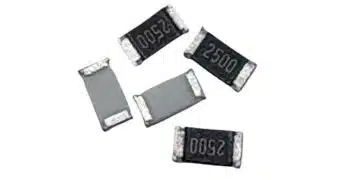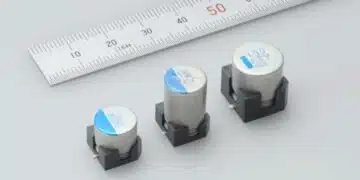Source: Kemet Application Intelligence Center video
Kemet Application Intelligence Center released a video with practical example of how MLCC ceramic capacitor ripple current is determined and how to measure ESR / ESL parameters.
The video shows how Kemet’s KC-LINK capacitors are tested for ripple current rating and ESR. These surface mount capacitors are designed to meet the growing demand for fast-switching wide bandgap (WBG) semiconductors that operate at higher voltages, temperatures, and frequencies.
KC-LINK capacitors are using class 1 dielectric technology, and provides excellent stability over voltage and temperature as well as exceptionally low ESR across a wide operating frequency range.
KC-LINK capacitors are also ideal for resonant converters and wireless chargers in applications such as cloud computing and charging electric vehicles.































